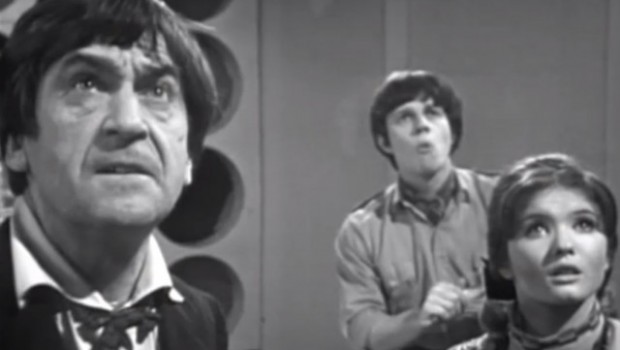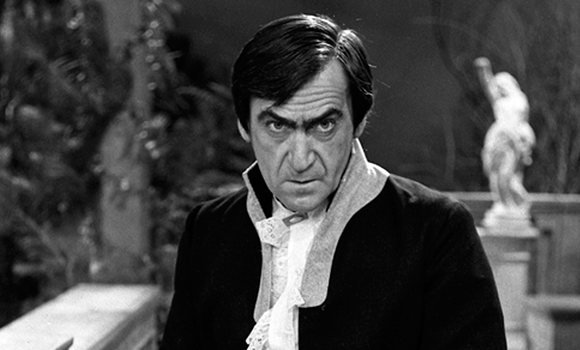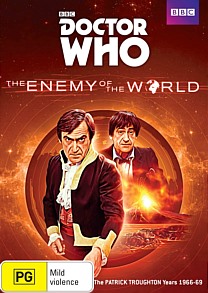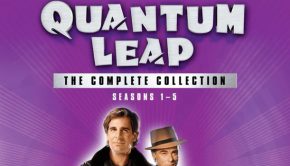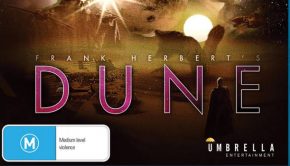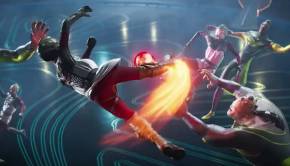Doctor Who The Enemy of the World DVD Review
Summary: While fans knew that Troughton was brilliant across his three years in the series, to have a complete story back only bolsters his reputation, and whets the appetite at the possibility that missing episodes wait to be found.
3.4
Complete!
Doctor Who The Enemy of the World
Distributor: BBC / Roadshow
Running Time: TBA
Rating: PG
Reviewer: Robert Mammone
How do you explain to a non-fan of Doctor Who the fever that gripped fandom in the lead up to early October 2013? The news that nine previously missing episodes of black and white Doctor Who surely isn’t that important?
How wrong they would be! While the background to the finds of these episodes is worthy of the kooky science fiction plotting that features in Doctor Who, the result was the return of two (one complete, the other, The Web of Fear, short an episode) stories from the sadly depleted era of the second Doctor, Patrick Troughton.
Given a worldwide release via iTunes, The Enemy of the World rocketed into the top five tv series in iTunes, displacing the just released last season of Breaking Bad, an astonishing feat and testimony to the deep love for the classic series right across the globe.
For those old enough to remember (i.e. me) the last time a complete story (Tomb of the Cybermen) was returned, the wait for a commercial release was an agonising six months. And the medium? VHS.
But we live in an age of shiny discs of bits and bytes, and the DVD release of The Enemy of the World has been eagerly anticipated by tens of thousands of OCD completists eager to fill that empty slot on their shelves.
So what of the story? Season five of Doctor Who, broadcast over 1967/68, is famed as the ‘monster season’. Cybermen, Yeti (who feature in the February scheduled release of The Web of Fear) have all been immortalised in fan lore. But The Enemy of the World stands out as being monster free, and indeed, base under siege free, that other trope of the Troughton era. Instead, we get an Earth-bound globetrotting political thriller, peopled with a motley crew of characters eager to do each other over in a quest to rule the planet.
The story’s central conceit is that the Doctor is the doppelganger of Salamander, the so-called Shopkeeper of the World, the man who eliminated famine. But does he harbour grander plans of world domination?
The joy of having the story back in its entirety is the not unusual thrill of actually being able to watch it. Previously, all fans had was a novelised adaptation of the script which featured a very rare instance of swearing introduced by the writer. There was also a crackling soundtrack created by wiring a tape recorder into the television on transmission and a series of ‘telesnaps’ photos taken by the enterprising John Cura, who pointed his camera at the television at the time of transmission and recorded seventy to eighty shots for each episode (the actual pictures are no bigger than a postage stamp).
With the visuals safely returned, we can appreciate a number of things about the episode. Chief amongst them is Troughton’s dual performance. It’s well known that Matt Smith modelled his own performance on Troughton, after being captivated by watching Tomb of the Cybermen. Hidden behind Troughton’s bluster, or false naivety, is a steel-trap mind sizing up his opponents and waiting for the moment to undo their plans. While we see him protest mightily about having to pretend to be Salamander at short notice, the second Doctor eventually does so with a great deal of childlike delight. And Troughton’s performance is remarkable, portraying two completely different characters – one largely amiable, the other cynical and filled with overweening ambition.
Without the monsters to carry the threat, David Whitaker has written a number of entertaining characters to interest the viewer. Milton Johns plays an oily sadist with relish, while Colin Douglas as security officer Donald Bruce brings stolidity and intelligence. Australian Bill Kerr brings a deviousness to his role that plays out over the course of the story. Unusually for 60s Doctor Who the two main female guest actors feature in strong roles. Mary Peach as Astrid Ferrier, all tight fitted jackets and riding pants, is a delight to the eye, and her opening shot lingers long in the memory. However, it is Carmen Munroe as Fariah, Salamander’s food taster, who steals the scenes she appears in. In an era where minorities on television were either overlooked, or were broadly stereotyped to fit the narrow palate of the viewer, Munroe comes across as an powerful, embittered character. Her perfunctory departure is disappointing, but nonetheless her depiction can only be applauded.
In the absence of the visuals, there was no way to appreciate the work of the director, Barry Letts (later producer of the Jon Pertwee era and the man who cast Tom Baker in the role of the Doctor). The opening episode is a revelation – almost entirely shot on location, in many ways it prefigures the gadget riddled Pertwee era – a chase and shootout involving a hovercraft and a helicopter keep the viewer on the edge of their seat. Later use of rear projection gives the story greater depth, and the way Lett’s depicts the Doctor and Salamander in the same shot in episode six demonstrates his versatility and willingness to experiment. It is sad that Letts died only a couple of years ago; I’m sure if he had been alive today, he would’ve been quietly gratified at the response to his first work in the series.
While the story is two episodes too long, and episode three is a comedy sidestep that brings the plot to a juddering halt, The Enemy of the World is a gem of a story too long left unappreciated. While fans knew that Troughton was brilliant across his three years in the series, to have a complete story back only bolsters his reputation, and whets the appetite at the possibility that missing episodes wait to be found.
Sound, Audio & Special Features
Sound – 4/5 stars – Mark Ayres has done wonders patching and boosting the audio, bringing it back to as close to transmission standard as possible.
Visual: 4/5 stars – with the original video transmission tapes long gone, and the surviving format a 16mm film recording of the video, Peter Crocker’s use of his VIDfire process to mimic the videotape look of the original broadcast gives the story a fluidity absent from the iTunes release. Some smearing is inevitable on the big screens that fill our lounge rooms (remember that when this story was broadcast, it was in the then revolutionary 625 line format) but overall, the image is as good as we can expect given the age of the materials.
Special Features – 1/5 – subtitles only. Given the tight timeframe between the return of the episodes in late May 2013, and the announcement the following October, and the puzzling need for secrecy, the usual plethora of special features to be expected in a Doctor Who DVD are almost entirely absent. Whether this absence is a portent of the future, or a sign of the BBCs (a) secrecy and (b) eagerness to cash in on the frenzy provoked by the news of its return is as yet unknown. Keep an eye out in the next 12-18 months for a possible special edition.
As for more missing episode returns…watch this space!


